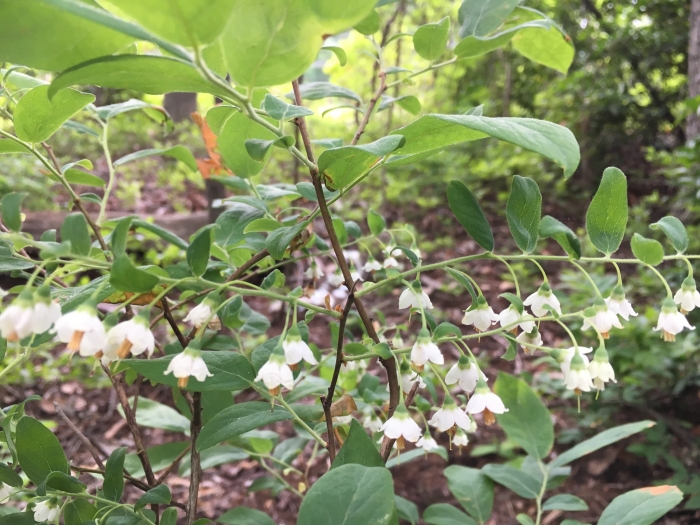Deerberry
(Vaccinium stamineum)
Deerberry (Vaccinium stamineum)
/
/

mecarr
CC BY 4.0



















































Estimated Native Range
Summary
Deerberry is valued for its wildlife benefits, as the berries provide food for birds and mammals. It is used in naturalistic plantings, woodland gardens, and as part of restoration projects. This shrub is relatively low-maintenance, tolerating a range of light conditions from full sun to part shade. It prefers well-drained, acidic soils and is drought-tolerant once established. Deerberry is not commonly afflicted by serious diseases or pests, but it can be susceptible to fungal leaf spots. It is not known for aggressive roots or invasiveness. When grown in optimal conditions, Deerberry can be a subtle addition to a native plant garden, offering ecological value and seasonal interest with its berries.CC BY-SA 4.0
Plant Description
- Plant Type: Shrub
- Height: 5-15 feet
- Width: 3-6 feet
- Growth Rate: Moderate
- Flower Color: White
- Flowering Season: Summer
- Leaf Retention: Deciduous
Growth Requirements
- Sun: Full Sun, Part Shade
- Water: Low
- Drainage: Fast, Medium
Common Uses
Bee Garden, Bird Garden, Butterfly Garden, Drought Tolerant, Edible*Disclaimer: Easyscape's listed plant edibility is for informational use. Always verify the safety and proper identification of any plant before consumption., Fire Resistant, Hummingbird Garden, Low Maintenance
Natural Habitat
Native to a variety of habitats including open woodlands, forest edges, and dry upland forests
Other Names
Common Names: Southern-Gooseberry, Tall Deerberry, Squaw Huckleberry, Highbush Huckleberry, Buckberry
Scientific Names: , Vaccinium stamineum, Polycodium stamineum, Vaccinium floridanum, Vaccinium stamineum var. stamineum, Vaccinium neglectum, Vaccinium stamineum var. neglectum, Vaccinium stamineum var. caesium, Vaccinium stamineum var. melanocarpum, Polycodium candicans
GBIF Accepted Name: Vaccinium stamineum L.